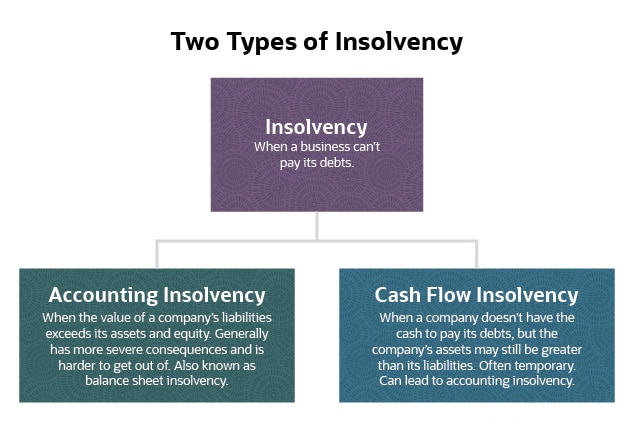How Insolvency Practitioner can Save You Time, Stress, and Money.
Table of ContentsSome Ideas on Insolvency Practitioner You Need To KnowHow Insolvency Practitioner can Save You Time, Stress, and Money.Some Ideas on Insolvency Practitioner You Should KnowThe 30-Second Trick For Insolvency PractitionerWhat Does Insolvency Practitioner Do?Not known Details About Insolvency Practitioner What Does Insolvency Practitioner Do?
Insurance coverage is monitored and managed by state insurance coverage departments, and one of their key purposes is protecting insurance policy holders from the danger of a firm in economic distress. When a company enters a duration of financial problem and is unable to meet its commitments, the insurance commissioner in the business's home state starts a processdictated by the legislations of the statewhereby efforts are made to help the business restore its economic footing.If it is identified that the company can not be rehabilitated, the firm is declared insolvent, and the commissioner will certainly ask the state court to get the liquidation of the business. The insurance commissioner, either appointed by the guv or chosen, heads the state insurance policy department and displays and regulates insurance coverage activity within the state.
By acquiring control of a company, the commissioner (or the insurance policy division) is, by regulation, the rehabilitator or liquidator of the firm. In this capacity, the commissioner or division takes control of the company's operations. Rather than do so directly, the commissioner might keep a special deputy receiver to manage the company's activities.
The 3-Minute Rule for Insolvency Practitioner
The receiver supervises a bookkeeping of the firm's assets and liabilities and carries out the estate of the company. In doing so, the receiver looks for to take full advantage of the business's properties, transfer them to money, and after that disperse that cash to financial institutions having valid cases against the insurance provider according to payment priorities defined by state legislation (in all states, insurance policy holders are top priority claimants whose insurance claims are paid before those of general financial institutions).
All insurer (with limited exceptions) accredited to market life or medical insurance or annuities in a state should be participants of that state's guaranty association. The warranty organization accepts the commissioner and the receiver in pre-liquidation planning. When the liquidation is gotten, the guaranty organization gives insurance coverage to the business's policyholders that are state citizens (approximately the degrees defined by state lawssee listed below; any benefit amounts above the warranty asociation benefit degrees come to be claims versus the business's staying possessions).
The above protection degrees apply separately for every financially troubled insurance company. [Back] When an insurance firm fails and there is a deficiency of funds needed to meet the commitments to insurance holders, state guaranty associations are turned on. Guaranty organizations have 2 primary sources of financing when giving insurance coverage to insurance policy holders. Guaranty associations have subrogation civil liberties to a proportional share of the properties remaining in the failed insurer.
An Unbiased View of Insolvency Practitioner

NOLHGA establishes a job pressure of representative warranty associations to work with the insurance commissioner to develop a strategy to safeguard policyholders.
You are right here: Bankruptcy is when a business or individual can't pay financial obligations when they are due. There are a number of options readily available to an insolvent business or individual: ASIC regulates companies, it does not handle individual insolvency treatments. To find out more about personal bankruptcy and personal insolvency arrangements, check out the Australian Financial Safety and security Authority site.
Top Guidelines Of Insolvency Practitioner
Predictive protection by helping you choose the best customers and the best markets to stay clear of poor financial debt to begin with, thanks to intense economic analysis - Insolvency Practitioner. Comprehensive market knowledge, providing you with 360-degree visibility on company markets and putting at risk problems. It would certainly be a simplification to think a profession credit report insurance policy begins and finishes with costs and pay-outs
This can take place for a variety of factors, including inadequate financial administration, unforeseen prices, or a change on the market. If a company is bankrupt, it may be required to fold or sell assets to pay creditors. This can have a significant effect on the service, employees, and investors.
Why does a company get in right into bankruptcy? There are a number of reasons why a company might enter into insolvency.
The Buzz on Insolvency Practitioner
Other reasons for bankruptcy consist of fraud, mismanagement, and unexpected prices. When a firm becomes bankrupt, its assets are used to repay its financial obligations. This can have a you can look here significant influence on the company, as it might no longer have the ability to proceed running. Bankruptcy can additionally cause job losses and the closure of businesses.
The firm may be compelled to offer assets, lay off team or also close down. Financial institutions may be left out of pocket and the firm's shareholders might see their investment vanish.
This can happen for a variety of reasons, consisting of poor monetary management, unforeseen costs, or an adjustment on the market. If a firm is insolvent, it might be forced to close down or market off assets to pay financial institutions. This can have a major effect on business, workers, and shareholders.
A Biased View of Insolvency Practitioner
It can result in work losses, property sales, and also insolvency. It is crucial to understand how business insolvency works and how it can influence your organization. Why does a business become part of bankruptcy? There are a number of reasons that a firm might participate in insolvency. The most common reason is that the business is incapable to pay its debts as they drop due.
Various other factors for bankruptcy include fraudulence, mismanagement, and unforeseen expenses. Bankruptcy can additionally lead to work losses and the closure of businesses.
Not known Details About Insolvency Practitioner
